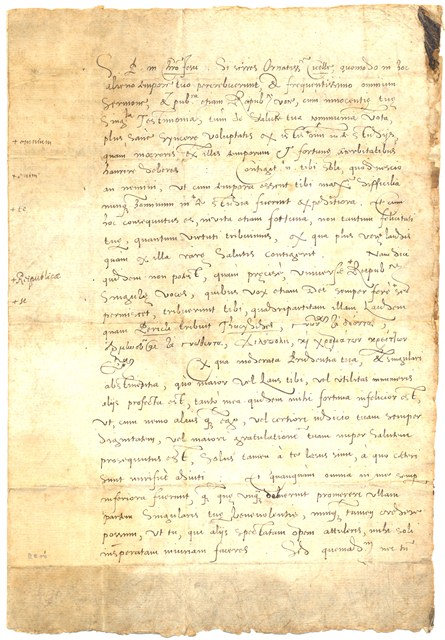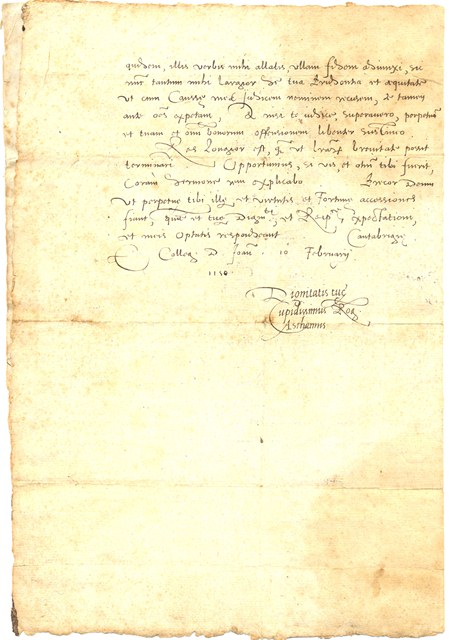The scholar and the statesman

In July 2013 we turned this Spotlight on Roger Ascham (1515-68), author, academic and royal tutor, highlighting his work as one of the foremost Greek scholars in England, his service as Latin Secretary to Queen Mary I and Queen Elizabeth I, and his skills as a calligrapher. While again reminding us of his superb penmanship, this exquisite letter from Ascham to William Cecil, dating from 1550, recalls the powerful circles in which he moved, and also the political dynamics which helped make St John’s College so influential and so important to the late Tudor regime.
According to the modern usage of the title, St John’s has produced three Prime Ministers of the United Kingdom: Viscount Goderich, the Earl of Aberdeen and Viscount Palmerston. But its most influential British statesman was arguably William Cecil, Lord Burghley, for forty years the paramount minister and leading advisor of Queen Elizabeth, successively her Principal Secretary and Lord Treasurer. Cecil’s grasp on power was ended only by old age and his death in 1598. It was unprecedented in English history, and has never been matched since. He enjoyed his sovereign’s complete trust. Cecil came to the College at perhaps its lowest ebb – in 1535, the year in which the patron and protector of St John’s during the earliest years, John Fisher, Bishop of Rochester, fell foul of Henry VIII and went to the executioner’s block as a traitor. But in later life he came to regard the time that he spent in Cambridge as a crucial, formative phase in his life. St John’s prospered accordingly; Cecil never forgot his old College and the friends he made there.
Ascham was one of those friends. Five years older than Cecil he shared the younger man’s appreciation of learning, both for its own sake and for the practical advantages brought through knowledge. By long tradition, it was at William Cecil’s dinner table that Ascham questioned the effectiveness of corporal punishment in educational discipline, and spoke so wisely on this and related topics that he was pressed to write on the wider subject. The resulting book was his classic and still enjoyable text, The Scholemaster (1570, published posthumously).

This beautifully written letter, composed in his rooms in St John’s one February day, is tantalising. At the time, Cecil was a rising statesman in the court of Henry VIII’s son, Edward VI. Writer and recipient seem to have had a misunderstanding or falling out. Ascham is intent on repairing the relationship: he lavishes compliments on Cecil, regrets what has happened, and promises that he will explain himself more fully in due course. It is impossible now to be certain, but we may speculate that this episode has something to do with Ascham’s temporary loss of favour with the then Princess Elizabeth.
The letter was purchased at auction and presented to the College by the editors of its magazine, The Eagle, in 1934.
This Special Collections Spotlight article was contributed on 21 July 2014 by Dr Mark Nicholls, College Librarian.